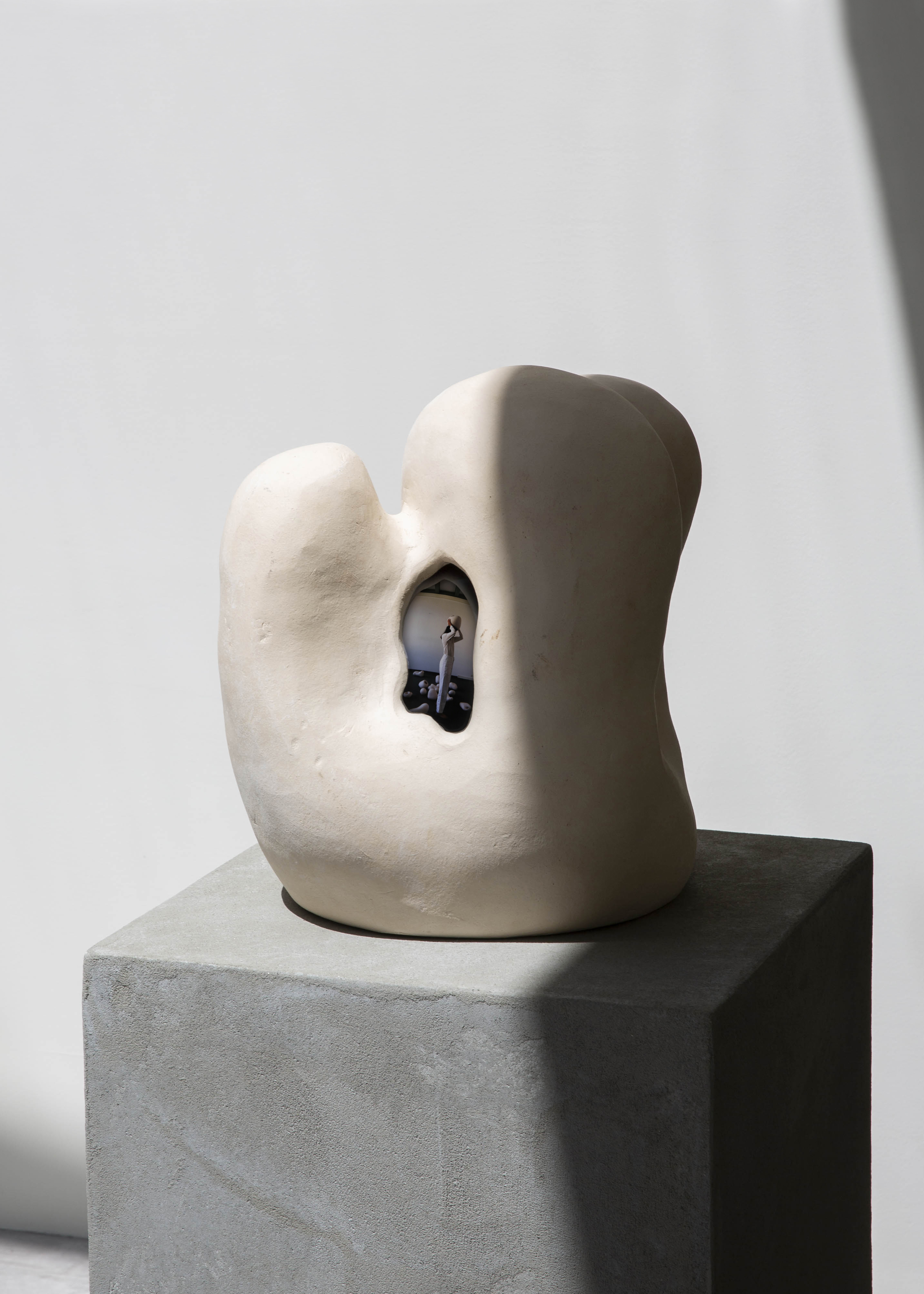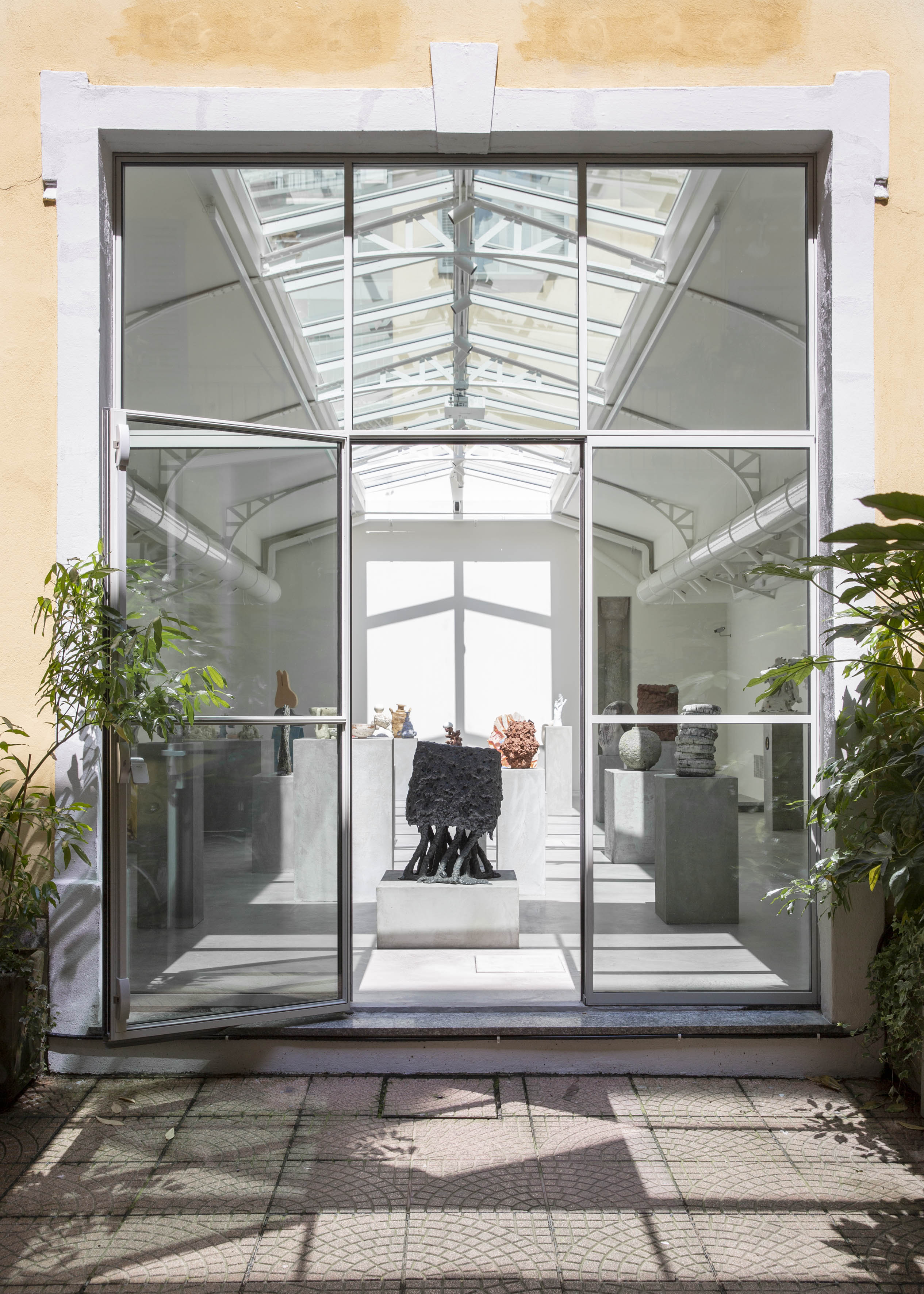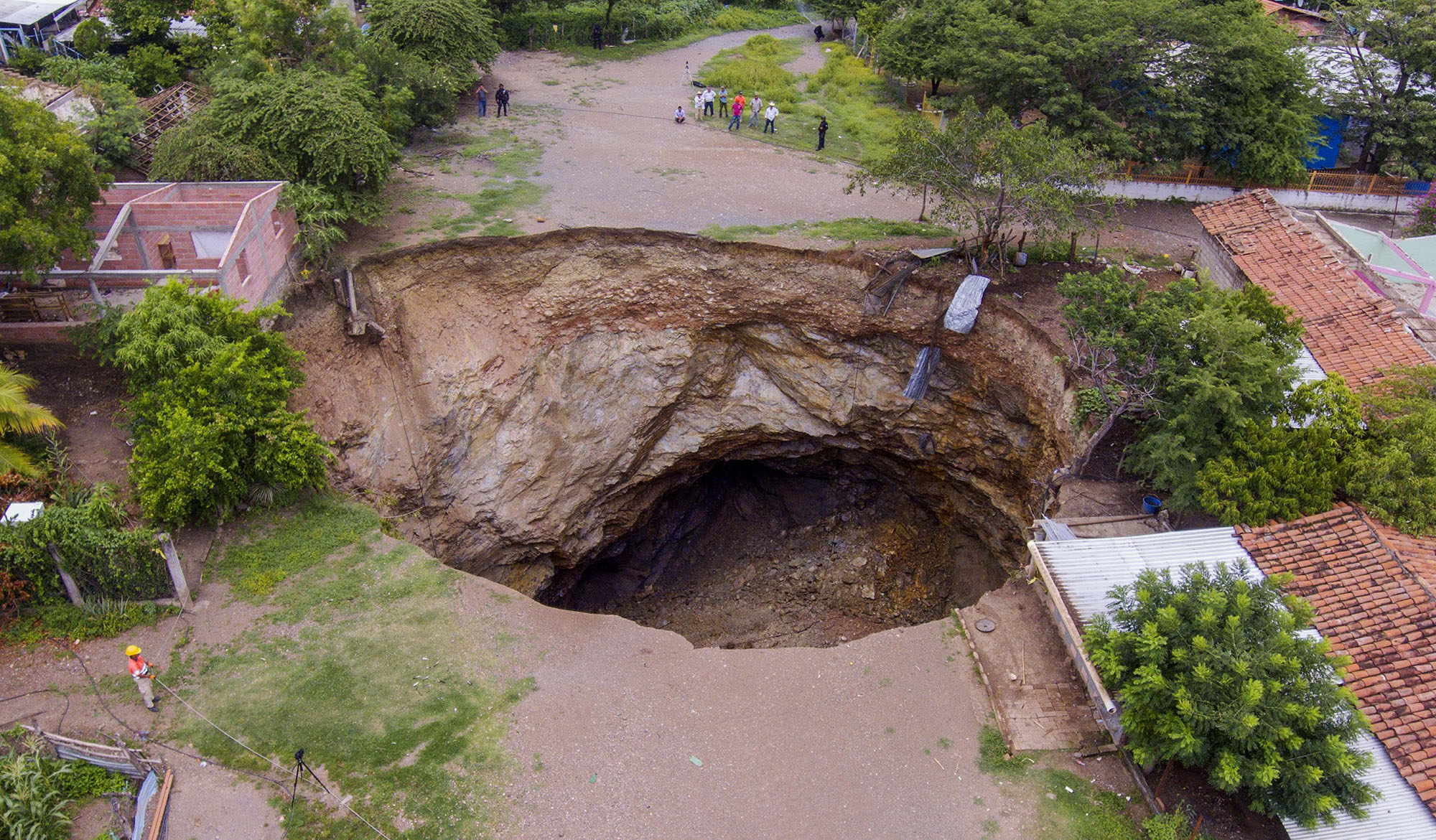(un)Known Territories
2024
Going Places
ceramics, video recording (15,54 min)
Fondazione Officine Saffi, Milano
Group show with:
Funda Baysal (1990), Koos Buster (1991), Willem van Hooff (1992), Koen Taselaar (1986), Kim Wawer (1988) and Floris Wubben (1982)


OFFICINE SAFFI AWARD 5
(UN)KNOWN TERRITORIES
From 29 May to 31 July, at its new headquarters, Fondazione Officine Saffi presents (un)Known Territories, the exhibition of the finalists of the Officine Saffi Award, the biennial international prize dedicated to contemporary ceramics that this year reaches its fifth edition. On this occasion, the public is invited to discover the Foundation's new headquarters in Milan, at Via Niccolini 35a.
In the new gallery space that preserves original features comprising a ceiling in glass and iron, the exhibition presents the works by the thirty-two finalist artists, selected by a panel of experts appointed with the task of examining over nine hundred applications received from sixty countries on five continents.
The exhibition features works by Carolina Raquel Antich (1970, Argentina), Andres Anza (1991, Mexico), Dorete Bendixen (1966, Denmark), Burçak Bingöl (1976, Turkey), Heidi Bjørgan (1970, Norway), Javier Bravo de Rueda (1989, Peru), Kaiting Chan (1989, Taiwan), Tessa Eastman (1984, United Kingdom), Ion Fukazawa (1990, Japan), Hanna Heino (1983, Finland), Gitte Jungersen (1967, Denmark), Jihyun Kim (1997, Korea), Chryssa Kotoula (1995, Greece), Hanna Miadzvedzeva (1988, Belarus), Effe Minelli (1986, Italy), Irene Nordli (1967, Norway), Angel Oloshove (1981, USA), Héloïse Piraud (1988, France), Irina Razumovskaya (1990, Russia), Davide Ronco (1993, Italy), Ioana Maria Sisea (1988, Romania), Sissi (1977, Italy), Carl Richard Söderström (1960, Sweden), Zoe Williams (1983, United Kingdom), Bettina Willner-Browne (1969, Australia) and Bari Ziperstein (1978, USA).
The finalist works also included pieces by six Dutch artists who are featured in Focus, a special section of the prize dedicated to exploring the panorama of ceramic creativity in a specific geographical and cultural context. In Focus: the Netherlands, the Foundation, together with Geertje Jacobs, curator of the section and director of the European Ceramic Work Centre (EKWC) invited the artists Funda Baysal (1990), Koos Buster (1991), Willem van Hooff (1992), Koen Taselaar (1986), Kim Wawer (1988) and Floris Wubben (1982) to take part. The project Focus: the Netherlands was implemented with support from the Embassy and Consulate General of the Kingdom of the Netherlands in Italy. According to Geertje Jacobs “In the Netherlands and far beyond, ceramic art takes a prominent place within the visual arts. Clay has a tradition of tens of thousands of years and is connected to craftsmanship and authenticity. Especially now that industrial and digital techniques dominate, clay is an attractive medium for artists and designers. It is physical, earthly, tangible and therefore the opposite of digital production techniques. At the same time, ceramics are of interest to designers and architects who are looking for new ways to apply the material or for sustainable solutions, in the reuse of materials or climate control in buildings. The Dutch artists in this exhibition all have a great love for the material clay and craftsmanship and at the same time they look for new, innovative or surprising ways to apply the material”.
Mobilising the expressive potential of the ceramics medium in response to the open call (un)Known Territories, each of the works in the exhibition offers a reflection on the wealth of meaning to be found in an open definition of “territory”: physical matter, sedimented and in continuous transformation; a place of discovery; the subject and object of knowledge in the making; a narrative device that binds personal and collective stories, places and cultures together. The exhibition and related award, which takes place every two years as part of the Officine Saffi programme, fulfils two of the Foundation’s key objectives: the promotion of a horizontal dialogue between the forms and languages of contemporary art, design and crafts skills; and the activation of an international platform for interaction between institutions, artists and the public.
